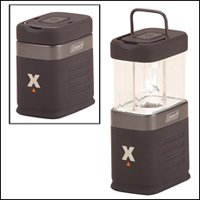A Little Illumination For Picking
A Backpacking Lantern

A backpacking lantern is a great piece of gear on those overnight backpacking trips. While you might have some light from a campfire or a head lamp, sometimes they aren’t the best options. There are times when you’ll be in a no-fire area or the head lamp just doesn’t cut it.
Keep in mind, when it comes to backpacking gear, you want equipment that is lightweight and compact! Lanterns are one of those pieces of equipment that can have the tendency to not always fit those categories. However, there are a lot of great options out there.
Your Backpacking Lantern Options
Essentially, there are three main backpacking lantern types for you to choose from: candle powered, fuel powered and battery powered. Below is a little more information on each:
Battery powered lanterns, like LED lanterns, are our favorite option. The main reason is because you can use it outside or inside the tent and they are easy to use. They are durable and depending on the battery they use, can weigh mere ounces. While they can put out more light than a candle, they aren’t as bright as a fuel powered lantern.
We own the Coleman Exponent Pack-Away Lantern (shown above). It isn’t the brightest lantern out there, but it provides sufficient light for our needs. Plus, it can fit into the palm of your hand when closed and weighs 8.3 ounces. We mainly like it because it is so small and packs very easily.
(shown above). It isn’t the brightest lantern out there, but it provides sufficient light for our needs. Plus, it can fit into the palm of your hand when closed and weighs 8.3 ounces. We mainly like it because it is so small and packs very easily.
You can find battery powered lanterns that use rechargeable batteries, which can help save on money and waste. The cost of a battery powered lantern can vary quite a bit and they can get on the expensive side.
Fuel powered lanterns are another option for a backpacking lantern. The great thing about fuel lanterns is that they can give off LOTS of light. Like your stove, fuel lanterns are powered by two types of fuel: liquid and canister. For that reason it is recommended that if you choose a fuel lantern, pick a lantern that uses the same type of fuel as your stove for easy conversion. Also,
as mentioned on our backpacking stove page
, pay careful attention to the type of fuel you end up going with.
Canister fuel (butane and propane) is difficult to find outside of the United States. Canister fuel lanterns tend to be easier to put together as there is no priming like you must do with liquid fuel such as gas or kerosene. However, canister fuel does not do well in temperatures below 0 F (-18 C).
Fuel lanterns have some downsides though. They’re generally expensive and usually weigh at least a pound or more. They can also be more fragile if they have a glass globe. Fuel powered lanterns require maintenance, so make sure you know how to take it apart to clean and repair it. Finally, fuel powered lanterns are also a bad choice for inside your tent due to the risk of fire and carbon monoxide poisoning.
The candle lantern is great for its ambiance, minimal weight, ease of lighting and maintenance, and low cost. The soft glow of candlelight is less disturbing to those around you. And since they require little but the frame and a candle, they can be very lightweight. Finally, since there aren’t any complicated components, they are the cheapest options available.
However, despite these great qualities, we don’t recommend candle lanterns. They can be dangerous, messy and don’t always produce enough light. The number one reason we avoid candle lanterns is because of the risk of fire. If we’re going to have a lantern, we want something that can also be used in our tent and it’s just not smart to have fire of any sort in your tent. Also, if you accidentally bump your lantern, it might spill wax on your gear.
Return from Backpacking Lantern to Backpacking Equipment
Return to Backpacking Tips Home Page